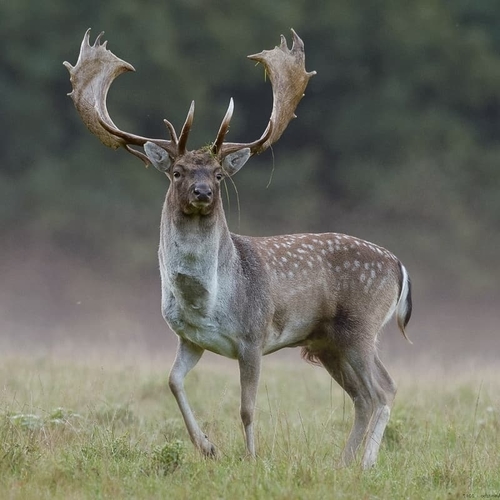
Fallow Deer
The Fallow Deer (Dama dama) enchants with its spotted coat and elegant antlers. Known for graceful leaps, this adaptable grazer thrives in woodlands and meadows, playing a vital ecological role. Its seasonal coat changes and social herding behavior make it a captivating subject for nature enthusiasts.
20-25 years
Lifespan
29.94 - 79.83 kg
Weight
Length: 1.301 - 1.75 m; Height: 90 - 100 cm
Size
Brown, Black, White, Tan
Color
17 months
Age of Sexual Maturity
7 months
Age of Weaning
30 mph
Top Speed
Least Concern
Conservation Status
Unknown
Population Trend
Characteristics
Dama dama, commonly known as the Fallow Deer, is native to Europe but has been introduced worldwide. It features a distinctive spotted coat, which varies seasonally, and broad, palmate antlers in males. Preferring mixed woodland and open grassland, it exhibits unique leaping behavior and is integral to its ecosystem as a grazer.
Distribution Range of the Fallow Deer
Dama dama, commonly known as the fallow deer, is native to the Mediterranean region of Europe. It is originally found in countries such as Italy and the Balkan Peninsula. Over time, the species has been introduced to various other parts of Europe, as well as Asia, North America, and Australia.
Fallow Deer's Habitat
Environmental Conditions
The fallow deer typically inhabits mixed woodland and open grasslands, which provide both shelter and ample grazing opportunities. They are well-suited to temperate climates and can adapt to a variety of habitats, although they prefer areas with a balance of forest cover and open spaces for foraging.
Ecological Niche
Fallow deer are herbivorous and play a significant role in their ecosystems as grazers. They help manage vegetation growth and contribute to the ecological balance by dispersing seeds through their droppings. In regions where they have been introduced, they may compete with native ungulates for resources.
Copyright @ Nature Style Limited. All Rights Reserved.
 English
English